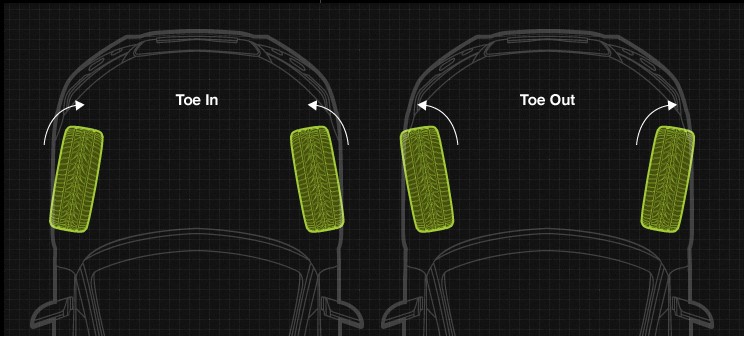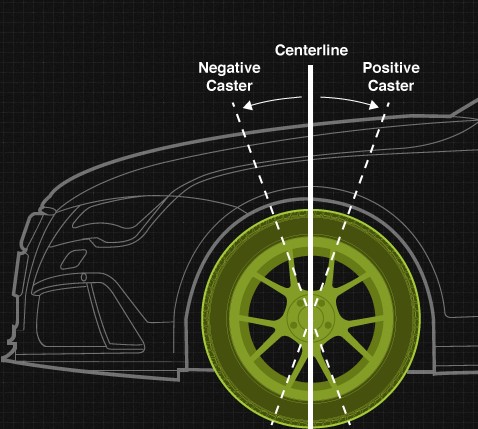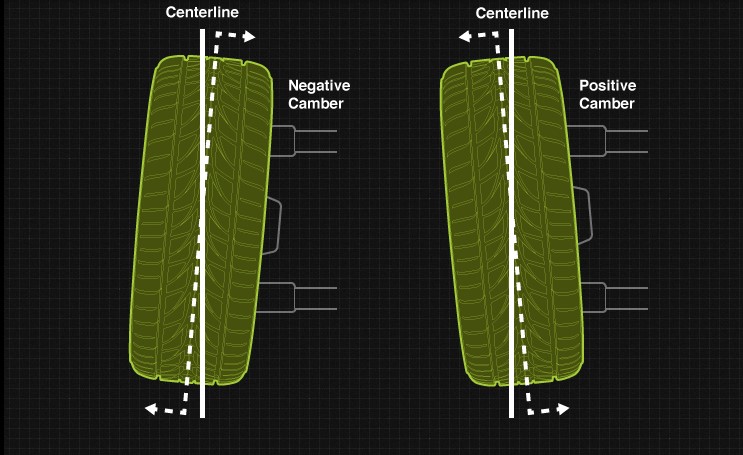What is wheel alignment?
rnWheel Alignment refers to the adjustment of a vehicle's suspension, the system that attaches the car to its wheels. It is not an adjustment of the wheels or tyres themselves. The extremely important part of proper alignment is adjusting the angles of the tyres, which affects how they touch the road.rnHow do you know if your wheels need an alignment?
rnThere are two ways to tell if your car needs to align the tyres. If you notice one or more of these indicators, an authorized service technician should check their alignment immediately.rn- rn
- If the steering of your vehicle off-center and it seems difficult to maintain a straight line of the vehicle even at low speed. rn
- Steering wheel vibration rn
- Rough Treadwear rn
How to detect and correct bad wheel alignment?
rnWhen you take your vehicle to a mechanic for wheel alignment, he/she is majorly concerned with three things:rn1. TOE
rn Toe wheel alignment
Toe wheel alignment(source: bridgestone.com)rnrnThis is the angle the tyres make while moving outward or inward with the car's longitudinal axis when viewed from the top angle. When both tyres on your car are angled the same way inwards, we call this toe-in alignment and when they are angled outwards we call this toe-out alignment. Both require adjustment.rn
2. Caster
rn Caster wheel alignment
Caster wheel alignment(source: bridgestone.com)rnrnThe angle of the wheels helps balance steering, cornering, and stability. Specifically, it is the angle of the steering axis when viewed from the side of your vehicle. If you have a positive wheel, the steer axle will lean toward the driver. On the other hand, negative wheels mean that the steering axis is tilted towards the front of your vehicle.rn
3. Camber
rn Camber wheel alignment
Camber wheel alignment(source: bridgestone.com)rnrnCamber deals with correcting the angular proportions between the vertical axis of the wheels and the vertical axis of the car seen from the front.rn
What is wheel balancing?
rnWheel balancing majorly with wheel and tyre association. Indicated to correct an imbalance between the weights of the wheels and the tyres. Balancing is always done in conjunction with wheel alignment to keep weight and alignment in sync.rnrnMaintaining a balanced weight on the wheel/tyre assembly is important for a safe and smooth ride, eliminating the vibration and minimizing the tyre wear. Misaligned tyres greatly increase the risk of wheel and suspension damage.rnHow is computerized wheel balancing done?
rnStep 1rnAll four tyres are taken off the vehicle and placed on a computerized wheel balancer.rnrnStep 2rnAll four wheels are tested individually for weight imbalance and the computer simulates all the specific irregularities.rnrnStep 3rnThe weight imbalance is corrected by placing counterweights on the rim at the exact spot where the computer instructs.rnrnStep 4rnThe wheels are checked again if the imbalance continue.rnrnAlso Read: Best Car Tyres for Indian roadsrnrnrnrn
rn









